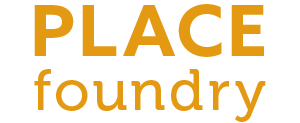Cities will not transform by design alone
Many are coming into a new awareness these days of how things are. The senseless killing of people of color is causing some to seek to understand and demand change. Recent books like Bloodlines by John Piper, White Fragility by Robin DiAngelo and Michael Eric Dyson, White Flight/Black Flight by Rachel A. Woldoff, The Color of Law by Richard Rothstein, The Divided City by Alan Mallach, and many more are nearly, or entirely, sold out on Amazon. There's a reality check in motion.
Reality Check
In 1999, I wanted to become an architect. My fascination with cities grew during my high school years. I saw then how unequal cities are. At that time, most of the wealth and economic investment in my hometown, Rockford, Il occurred in the 61107 and 61114 zip codes. So, I decided to pursue architecture. Then, and still today, I believed the quality design of homes, neighborhoods, shopping centers, and public spaces is not limited to certain areas. When I turned 17, I asked my parents if I could have a car to drive to school. True to form, they said I would have to find a job to help purchase and maintain it. Well, that was not the response I wanted to hear, but I quickly pivoted toward finding a job. Then, I had a random idea. Could I find a job at a local architecture firm?
In the fall of 1999, I landed a job at Larson and Darby (L&D) Architects, making minimum wage ($5.15/hour). Typically, I worked two hours after school during the week and all day during summer and winter breaks. I learned CAD (computer-aided drafting) and the overall construction process. I met amazing people at L&D who, to this day, are still in my life. One day, I was working in the print shop to help produce construction documents on the old blueprint machine for a major grocery store in Rockford. I asked an architect, why are we building another grocery store in an area that already has plenty of them? He responded along the lines of zoning, planning, investors, and politics as significant influencers for how things get done.
Pivoting
That conversation led me to switch majors from studying Architecture to Urban & Regional Planning. Most of my time at the University of Illinois focused on design and public policy. My Masters of Urban Planning thesis is on gentrification. In 2006, I set out to change the world. Fast forward to 2020, and I see the same issues. As I shared in my post on May 23, there is growing pessimism toward the future of cities. Even this narrative adheres to the either/or mindset. A recent article, Rise of the Essential Class by Peter Saunders, made me pause and be reminded just how much we as urbanists and urban planners are not listening to better serve and influence change in our communities. We are stuck in our thinking, and it is getting in the way of solving problems. We have to merge the discussions on placemaking and urban economics. The current rioting and uprising is the voice of the broken fabric of the heart, mind, soul, and spirit of the lived experience in our cities, towns, and villages. Urban Planners like Alian Bertaud have already made the plea to the point of writing a textbook to state why this must happen.
From systemic racism, 100,000+ deaths from COVID-19, to the beginnings of uneven economic recovery, I keep thinking about where do we go from here? How long will it take to heal our social, emotional, spiritual, and economic life here in the United States? More importantly, will it be more or less equitable and sustainable? Will the lost freedom, experienced by many regularly (and now felt by almost daily over the last 90 days), lead us to greater empathy, better public policies, and dramatically improved outcomes for neighborhoods and marketplaces?
Decline and disintegration does not just "happen." The coronavirus pandemic is accelerating well-known trends - both positive and negative. It's a lot easier to talk about the acceleration of trends like remote work and food delivery. It's a lot harder but necessary to discuss race, class, placemaking, and urban economics. However, if we continue to structure conversations, policy-making, and doing in an either/or way of thinking, then we will only repeat and reinforce divisions.
I pray the next 20 years will lead me on a journey to accelerate upward mobility for all people, especially for the marginalized. This national crisis we are in has strengthened my resolve to think and do differently. Twenty years ago led me to embark on a quest to bring good design to cities. But design is not enough. We are in desperate need of a transformation of our hearts, minds, souls, spirit, and cities. It starts with me.
In the days, weeks, and months ahead I will shift my writing. At the right time, I will call on others in my urban planning cohort to join me in implementing practical and transformational policies and placemaking principles to affect change. Cities will not transform by design alone.
